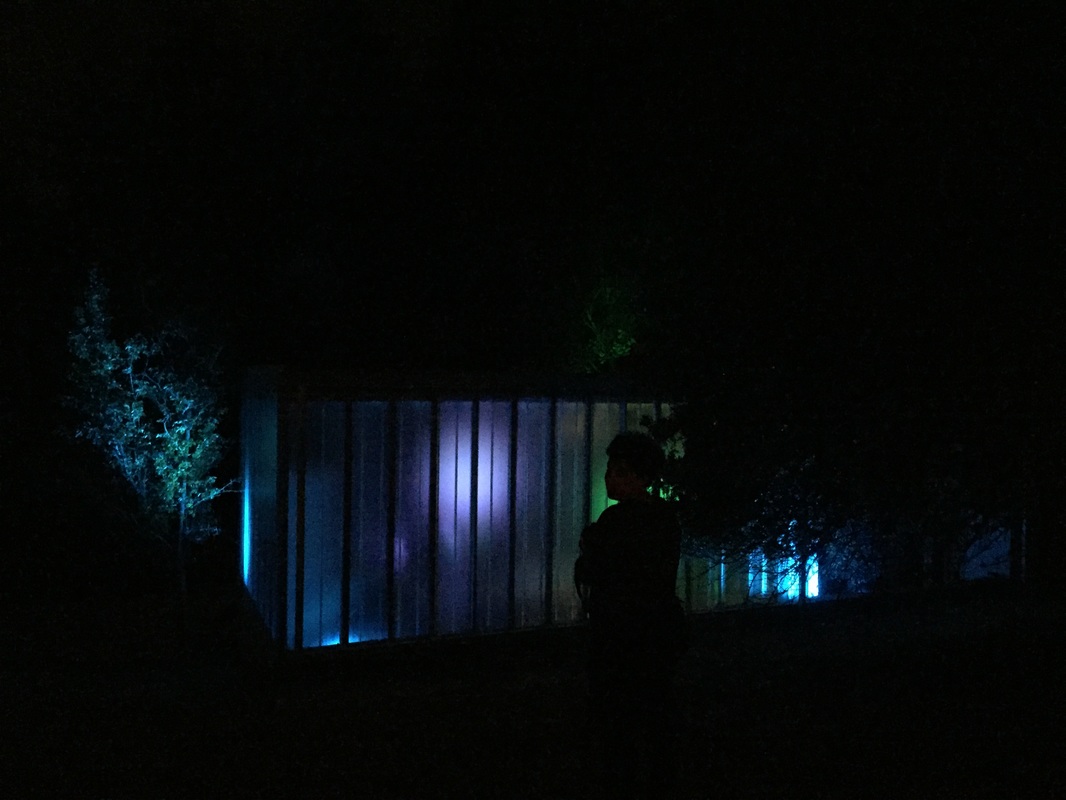Ecosystemic musical works tend to physically resonate with audiences; there is a tangible quality to the sound and its behavior in the space. These types of work are—by the same token—often difficult to document, especially without the presence of human performers. Recordings tend to sound flat and lack dimensionality—let alone anticipation or excitement. At Montalvo, I have been exploring how to integrate theatrical lighting into ecosystemic performances.
Specifically, I have been programming Kyma to listen to the literal ecosystem at Montalvo and control the lighting I have installed in the Richard Serra-designed sculpture studio (Studio 50). The lighting controls change in response to what Kyma “hears” in the surrounding environment, which turns out to be crickets, and a lot of them. At the top of the hill, we are surrounded by a symphony of the insects who perform without pause, starting around sundown.
The sculpture studio is an ideal location for me to explore the possibilities of lighting, because it is a completely translucent rectangular structure. From the outside, the lights exist in the environment as floating orbs and ethereal mists, flickering, throbbing, and transmuting colors in response to the ever-changing frequencies and dynamics of the cricket-infused ecosystem. Of course, human activity is a feature of the sonic ecosystem and contributes to the control of the light show as well. Airplanes passing overhead are the most obvious participants, but all sonic elements are contributors, or collaborators even, in the production of the work. My experiments while I have been here have included performances by a clarinetist and an opera singer, in collaboration with the crickets and the space as a whole.
I am grateful to have the opportunity and support of the Montalvo staff in pursuing this line of artistic inquiry while in residence; when I arrived it was a rather fuzzy concept in my mind, but quickly became the experiment-in-presentation it is after only a couple of days here. I am very excited about the possibilities for this in future work. While experimenting up on the hill after dark, I have come to imagine a piece that involves lighting from within and outside the building and surrounding environment, with microphones and speakers (perhaps also performers) distributed throughout the larger landscape, creating a sound/light/landscape installation on the grounds of the Lucas Artists Residency Program at the Montalvo Arts Center. However the explorations of my residency inform my future work, every moment here has been inspiring and will resonate with me for a long time to come.
The LAP’s Studio 50, named after donor Peter E. Doyle, was designed by artist Richard Serra in collaboration with Jim Jennings Architecture.


